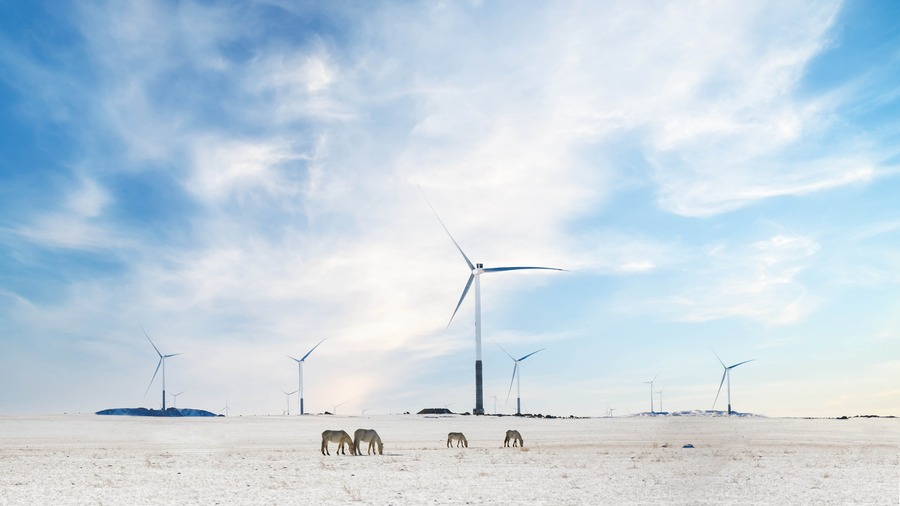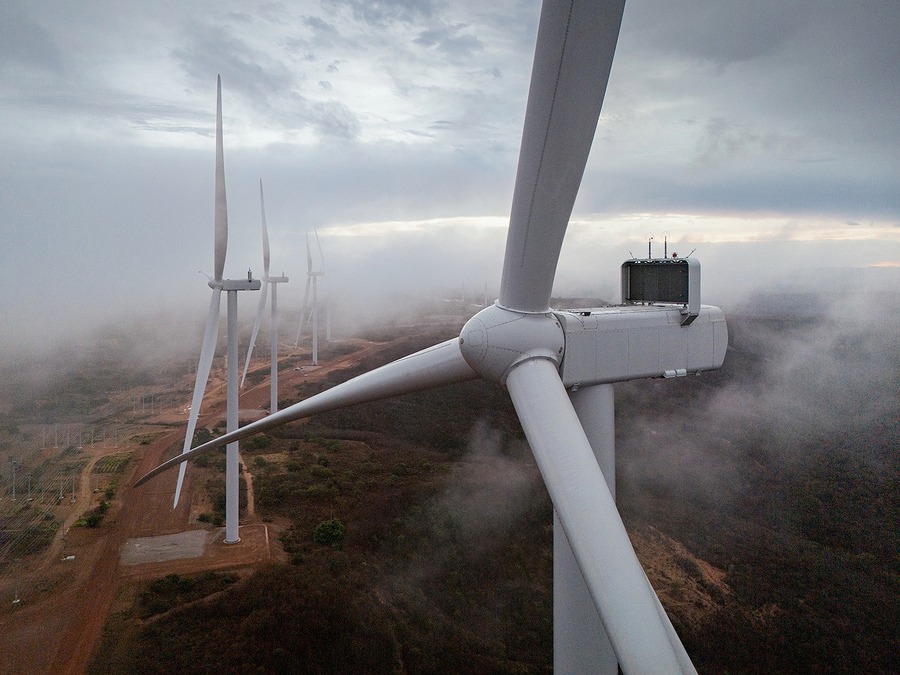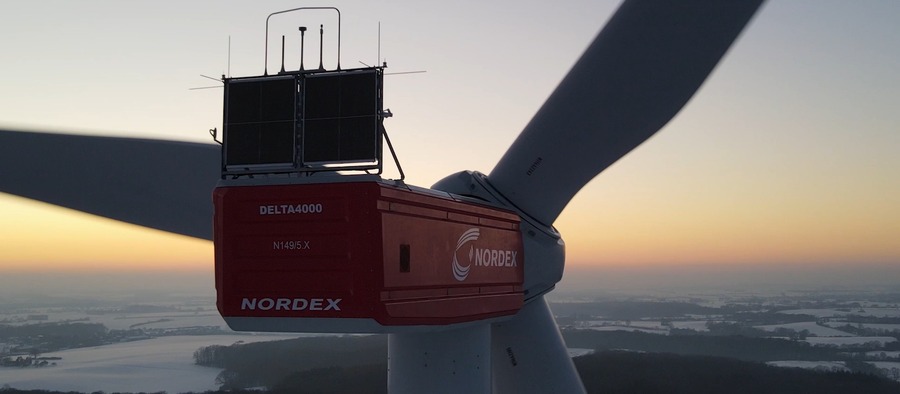Wind turbines keep getting bigger every year. There's one main reason for that: the longer the blades, the more powerful the turbine. But couldn't you just install two smaller turbines instead of one large one? To answer this, let's take a look at real-world data.
Goldwind is a Chinese wind turbine manufacturer. Here are photos of their operating turbines from the company website:
Goldwind is a Chinese wind turbine manufacturer. Here are photos of their operating turbines from the company website:
Goldwind GW 82 / 1500 - output: 1500 kW (1.5 MW). Rotor length: 82.3 meters, meaning a blade diameter of roughly 41.15 meters.
Goldwind GW 171 / 6000 - output: 6000 kW (6.0 MW). Rotor length: 171 meters, giving a blade diameter of about 85.5 meters.
Even here you can already see that the relationship between blade length and output is nonlinear. The second turbine's blade is 2.07x longer, but the power is 4x higher!
Vestas is a wind turbine manufacturer from Denmark (their turbines are shown in the next photo):
Goldwind GW 171 / 6000 - output: 6000 kW (6.0 MW). Rotor length: 171 meters, giving a blade diameter of about 85.5 meters.
Even here you can already see that the relationship between blade length and output is nonlinear. The second turbine's blade is 2.07x longer, but the power is 4x higher!
Vestas is a wind turbine manufacturer from Denmark (their turbines are shown in the next photo):
Vestas' V120-2.2 MW - 2.2 MW. Rotor diameter: 120 meters, so each blade is about 60 meters long.
Vestas' V150-4.2 MW - 4.2 MW. Rotor diameter: 150 meters, so blade length is about 75 meters.
Here the second turbine's blade is only 1.25x longer, yet the output is 1.9x higher, almost double.
And finally, let's look at the German manufacturer Nordex. The photo is a screenshot from their promotional video:
Vestas' V150-4.2 MW - 4.2 MW. Rotor diameter: 150 meters, so blade length is about 75 meters.
Here the second turbine's blade is only 1.25x longer, yet the output is 1.9x higher, almost double.
And finally, let's look at the German manufacturer Nordex. The photo is a screenshot from their promotional video:
Nordex N133/4.8 - 4.8 MW. Rotor length: 133.2 meters - blade diameter approx. 66.6 m.
Nordex N163/5.X - 5.0 MW. Rotor length: 163 meters - blade diameter approx. 81.5 m.
Nordex N175/6.X - 6.0 MW. Rotor length: 175 meters - blade diameter approx. 87.5 m.
Even between the last two models, a 1.07x increase in blade length results in about a 1.2x increase in power!
Why is that? The answer is simple - and it comes down to basic geometry. Wind turbine manufacturers use the term "swept area", meaning the area covered by the rotor. A turbine's power output depends on that swept area. And in reality, that's just the area of a circle.
The area of a circle is:
This is also why modern wind turbines have become enormous. The rotor diameters of the largest models have long surpassed 200 meters! So from an energy standpoint, it's far more efficient to install one large turbine instead of two smaller ones - you'll get significantly more electricity out of it.
Nordex N163/5.X - 5.0 MW. Rotor length: 163 meters - blade diameter approx. 81.5 m.
Nordex N175/6.X - 6.0 MW. Rotor length: 175 meters - blade diameter approx. 87.5 m.
Even between the last two models, a 1.07x increase in blade length results in about a 1.2x increase in power!
Why is that? The answer is simple - and it comes down to basic geometry. Wind turbine manufacturers use the term "swept area", meaning the area covered by the rotor. A turbine's power output depends on that swept area. And in reality, that's just the area of a circle.
The area of a circle is:
A = Pi * r^2So the relationship isn't linear - it's quadratic because of the square on the radius. The radius is the blade length. This is why even small increases in blade length lead to a dramatic (quadratic) increase in the amount of power a turbine can generate.
This is also why modern wind turbines have become enormous. The rotor diameters of the largest models have long surpassed 200 meters! So from an energy standpoint, it's far more efficient to install one large turbine instead of two smaller ones - you'll get significantly more electricity out of it.


